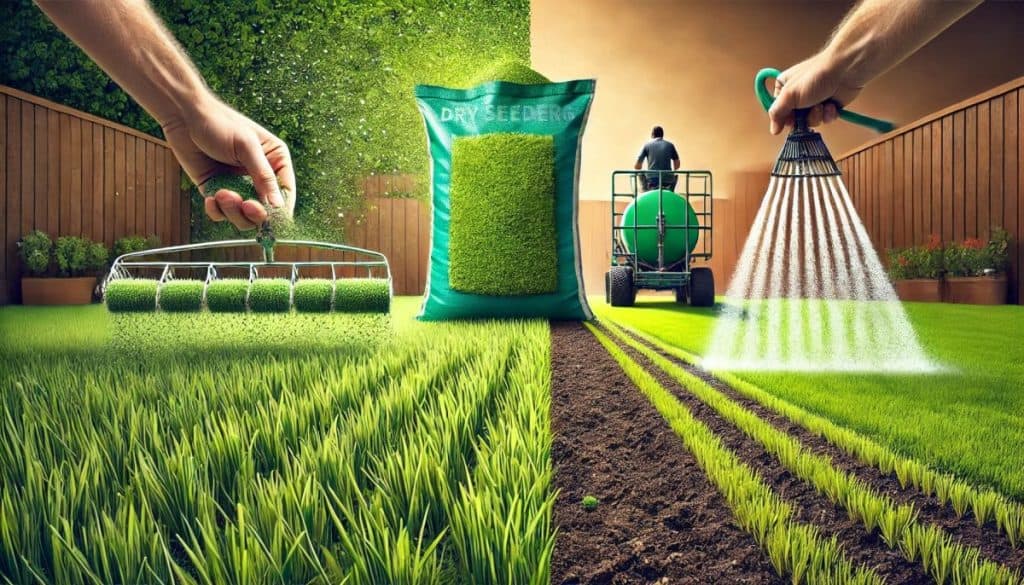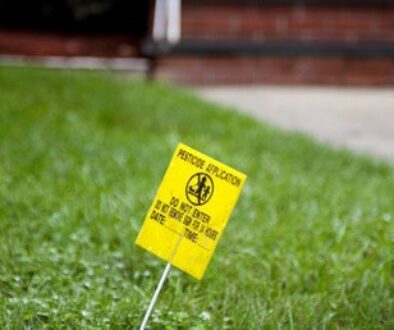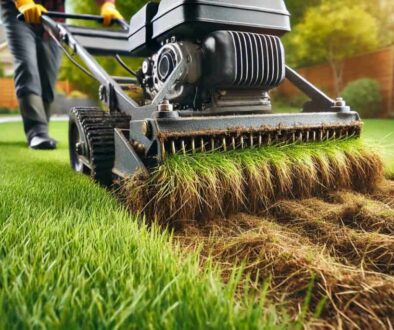Dry Seeding vs. Hydro-Seeding: Understanding the Best Choice for Your Lawn
Summary:
When it comes to establishing a lush, green lawn, choosing the right seeding method is crucial. Dry seeding and hydro-seeding are two popular techniques, each with its own set of advantages. While hydro-seeding offers quick coverage and erosion control, dry seeding stands out for its cost-effectiveness, ease of application, and long-term lawn health. This article explores the key differences between dry seeding and hydro-seeding, focusing on why dry seeding might be the better option for your lawn.
Dry Seeding What is it?
Dry seeding, also known as traditional seeding, involves spreading dry grass seed directly onto prepared soil. This method can be done manually or using a mechanical spreader. After seeding, the lawn is typically covered with a thin layer of soil or compost and watered regularly to promote germination.
Advantages of Dry Seeding
Dry seeding is significantly less expensive than hydro-seeding. The lower cost of materials and equipment makes it an attractive option for homeowners and businesses on a budget.
Hydro-Seeding What is it?
Hydro-seeding involves spraying a slurry of water, grass seed, mulch, and fertilizers onto the soil. This method is typically performed using specialized hydro-seeding equipment. The mulch in the slurry helps retain moisture, protect the seeds, and promote quicker germination.
Advantages of Hydro-Seeding
Hydro-seeding provides rapid seed coverage, making it ideal for large areas and erosion-prone sites. The slurry helps keep the seeds in place and promotes fast germination.
Comparing The Two Methods
While both dry seeding and hydro-seeding have their benefits, dry seeding stands out for several reasons:
- Cost: Dry seeding is much more affordable, making it a preferred choice for budget-conscious homeowners.
- Customization: The ability to select specific grass varieties tailored to local conditions gives dry seeding an edge in creating a customized and resilient lawn.
- Root Development: The deeper root growth encouraged by dry seeding leads to a healthier and more drought-resistant lawn in the long run.
Conclusion
Choosing the right seeding method depends on your specific needs and budget. While hydro-seeding offers rapid coverage and erosion control, dry seeding’s cost-effectiveness, ease of application, and long-term benefits make it a superior choice for many homeowners. By understanding the advantages of each method, you can make an informed decision and achieve the lush, green lawn you desire.
Dry seeding and hydro-seeding both have their place in lawn care, but for those looking for a cost-effective, customizable, and long-lasting solution, dry seeding is often the best choice. Whether you’re starting a new lawn or overseeding an existing one, dry seeding provides the foundation for a healthy and beautiful landscape.




